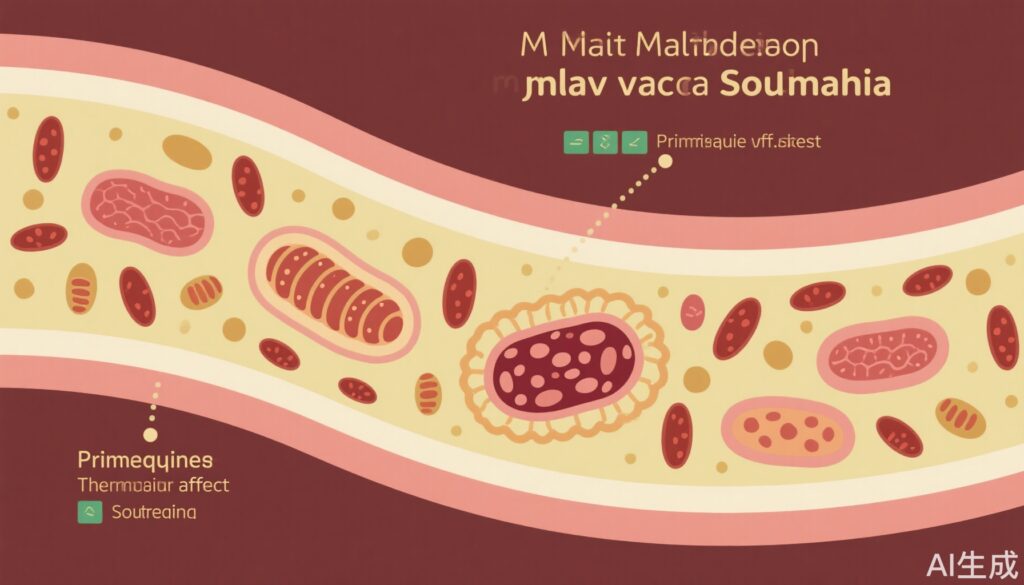Background
Plasmodium vivax malaria remains a major public health concern in many tropical regions, including Cambodia. One of the key challenges in controlling P vivax is its ability to form dormant liver stages called hypnozoites, which can reactivate and cause relapses weeks to months after the initial infection. Primaquine is currently the only widely available antimalarial drug effective in eliminating hypnozoites, thus preventing relapse. Most malaria-endemic countries, including Cambodia, have traditionally used a total primaquine dose of 3.5 mg/kg administered over 14 days. However, emerging evidence indicates that this dose may be insufficient to fully clear hypnozoites in tropical P vivax strains, especially in Southeast Asia. The World Health Organization (WHO) now recommends a higher total dose of 7.0 mg/kg in most endemic regions to enhance radical cure.
Research Methodology
An open-label, randomised controlled trial was conducted in Kampong Speu province, western Cambodia, enrolling patients aged 15 years or older with microscopically confirmed P vivax infection. Key exclusion criteria included severe malaria, other serious illnesses, anaemia (hemoglobin <8.0 g/dL), pregnancy, breastfeeding, drug sensitivities, and recent antimalarial use. All participants received a 7-day artesunate regimen at 2 mg/kg per day for blood-stage clearance.
Patients with normal glucose-6-phosphate dehydrogenase (G6PD) activity were randomly assigned in a 2:2:1 ratio to receive either low-dose primaquine (3.5 mg/kg total; 0.25 mg/kg/day for 14 days), high-dose primaquine (7.0 mg/kg total; 0.5 mg/kg/day for 14 days), or no primaquine. Those with G6PD deficiency were assigned to the no primaquine comparator arm for safety reasons.
To exclude reinfection as a cause of recurrence, patients were relocated to Aoral town, a malaria-free area, for 90 days. After this period, G6PD-normal patients initially not receiving primaquine were offered the standard 3.5 mg/kg primaquine treatment unsupervised. Patients were followed monthly until 180 days post-treatment to assess recurrence. The primary endpoint was recurrence of P vivax within 90 days during relocation, evaluated among patients who completed treatment and adhered to relocation.
Key Findings
Between November 2021 and February 2024, 160 patients were enrolled; 147 were included in the primary analysis. The no primaquine group included 59 patients (37 G6PD deficient, 22 randomly assigned G6PD normal), 45 patients received low-dose primaquine, and 43 received high-dose primaquine. The majority were young adult males, all Cambodian nationals.
P vivax recurrence rates within 90 days were markedly different among groups: 81% (48/59) in the no primaquine arm experienced at least one recurrence; 24% (11/45) in the low-dose primaquine group; and only 5% (2/43) in the high-dose primaquine group (p=0.0141 for high-dose vs low-dose). After accounting for missing data, high-dose primaquine was associated with a significantly reduced hazard of recurrence compared to low-dose (hazard ratio 0.17; 95% CI 0.04–0.79; p=0.0229).
Both primaquine regimens were well tolerated with no serious adverse events reported, underscoring safety in G6PD-normal individuals. The comparable safety profiles support the feasibility of higher-dose primaquine regimens under appropriate monitoring.
Interpretation and Clinical Implications
These findings demonstrate that the conventional low-dose primaquine regimen is suboptimal for preventing P vivax relapse in Cambodia, a setting with tropical P vivax strains. The high-dose 7.0 mg/kg regimen markedly reduces relapse risk without compromising tolerability or safety in G6PD-normal patients. This aligns with WHO recommendations advocating higher doses to achieve radical cure in most endemic areas.
Given the high relapse rates observed without primaquine, radical cure remains essential to prevent repeated infections that perpetuate transmission and contribute to morbidity. The relocation strategy to a malaria-free zone strengthens the validity of relapse as opposed to reinfection as the mechanism of recurrence.
Limitations and Considerations
Limitations include the single-centre design and predominance of young male participants, potentially limiting generalizability. The unsupervised administration of primaquine after relocation in some patients may affect adherence and outcomes. G6PD-deficient patients were not treated with primaquine due to safety concerns, highlighting the ongoing challenge of providing radical cure for this subgroup.
Conclusion
The trial provides robust evidence that a 14-day high-dose primaquine regimen (7.0 mg/kg total) significantly improves prevention of P vivax relapse compared to the conventional 3.5 mg/kg regimen in Cambodia. Both regimens are safe and well-tolerated in G6PD-normal individuals. These findings support the adoption of WHO’s revised dosing guidelines to enhance malaria elimination efforts in Southeast Asia.
References
Eng V, Lek D, Sin S, Feufack-Donfack LB, Orban A, Salvador J, Seng D, Heng S, Khim N, Tebben K, Flamand C, Sommen C, van der Pluijm RW, White M, Witkowski B, Serre D, Popovici J. 14 days of high-dose versus low-dose primaquine treatment in patients with Plasmodium vivax infection in Cambodia: a randomised, single-centre, open-label efficacy study. Lancet Infect Dis. 2025 Aug;25(8):884-895. doi: 10.1016/S1473-3099(25)00033-7.



